If you own a restaurant, you are familiar with the increasing amount of pressure to improve your online presence. From the pandemic to increased competition, you know you have to boost your online visibility.

Whether it’s in-person dining or carry-out options, increasing local visibility is crucial for local restaurants.
Obviously, there are myriad options out there to gain more traffic, from paid aids to partner services. But ultimately rising to the top of Google in the organic search results remains one of the most effective ones. It doesn’t take a huge investment on your part to get the most relevant and direct traffic for conversions.
Here are some restaurant SEO tips to help you get more exposure and generate more leads.
1. SEO Strategy for Local Restaurants
The very first thing you need to do is to set your SEO strategy. So don’t get ahead by delving into a handful of tools and platforms just yet. Not only SEO strategy will help you considerably narrow your competition, but it will also drive quality traffic to your website faster.
Begin by defining the location area you want your local restaurant to own. This is where most of your potential customers will come from, either because they live or work nearby (or are visiting).
Carry on with keyword research using a keyword research tool. Keywords are the terms and phrases your audience would most likely use to search for something.
In terms of the restaurant and food industry, there are some distinct groups that you’d want to classify appropriately which all have different levels of competition.
- Generic restaurant terms
Terms like “restaurants” and “Sydney restaurants” are some of the most generic variations someone might use.
Set your geographic focus to the area you defined and use both generic terms by itself (“restaurants”) and the geographic modifier (“Sydney restaurants”) in the keyword research tool. You can add other variations related to your restaurant.
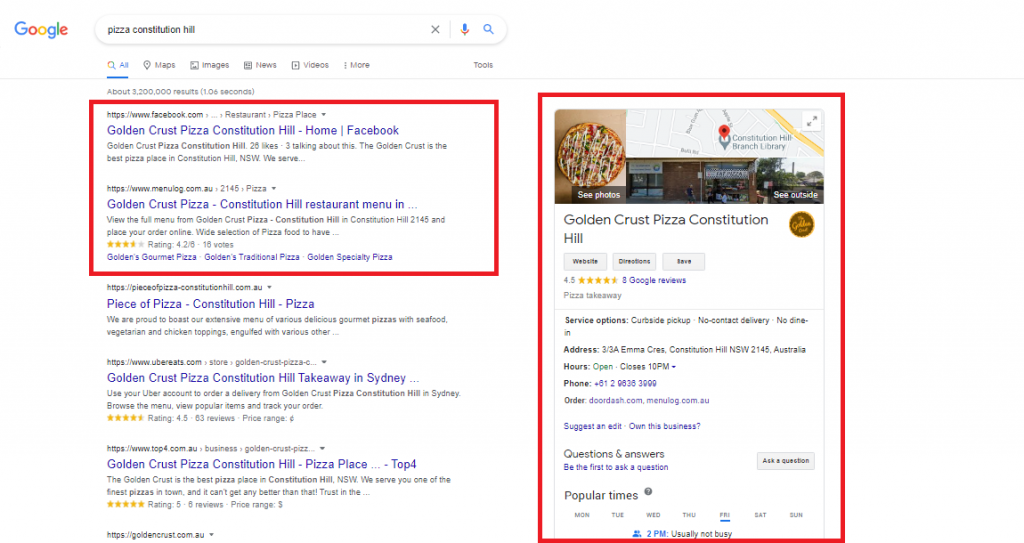
- Specific restaurant terms
The next level terms are related to the specific categories your restaurant falls into. For example, “Indian restaurants”, “family restaurants”, “Indian cuisine”, and other unique features and types of cuisine your restaurant offers.
If you’re not sure what specific categories or wording you should use, look at Google Maps (the Google My Business listings), Yelp, and TripAdvisor. See their filtering criteria in your area to browse the general categories they use.
2. Local Search for Restaurants
To get started with local search, claim, standardise, and optimise your restaurant’s listings across all of the major and relevant local search properties. This includes the combination of search engine directories, social media, and industry-specific directory sites.

Another major concern is consistent NAP (name, address, phone) information. Make sure your NAP information is up to date and consistent across all data sources.
After you do all that, work on optimizing the fields of information like business description and business categories. They need to align with your focus terms identified in your keyword research.
3. Social Media Presence
It’s true that social media’s direct impact on SEO remains contentious. But social media engagement can drive users to your site.
One way to indicate a strong organic search presence is by having a strong social media presence. This is because content, engagement, and popularity conform to important SEO pillars, which are relevance and authority.
Being active on social media means engaging with followers and replying to any inquiries immediately. The way you communicate online reflects how you serve and approach customers.
4. Reviews & Testimonials
As far as restaurant search results can go, reviews and ratings are inevitable. This is because reviews and ratings are social proofs: People are willing to visit your restaurant because others have as well. Even more so, reviews and testimonials can bring bigger impacts on traffic to your website.
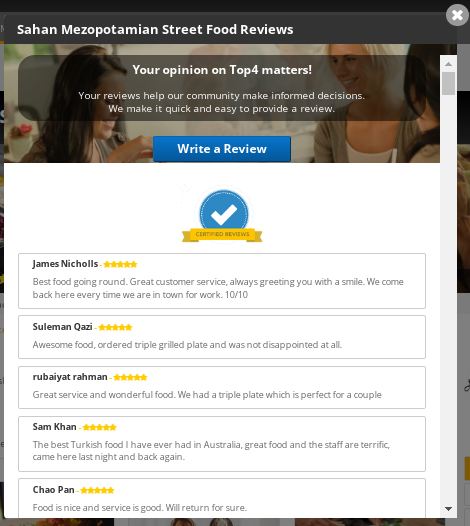
Having glowing reviews and testimonials appear in search results can also help generate more foot traffic as people like to click higher star ratings.
5. Relevant Content
Maintaining engaging and unique content on your website will make your brand stronger as it creates an overall impression from users. But the content you provide has to be local and useful for your prospects and customers. This will help you rank better and create higher brand recall.
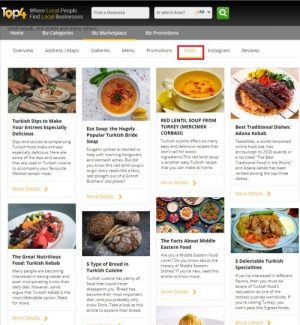
Don’t assume everyone knows where your restaurant is located. Provide content that can help everyone out. This way you could also reach out-of-town visitors who don’t have the ins-and-outs of the local area where you’re located.
The content you provide doesn’t necessarily have to be blogs or written copies. As far as restaurants are concerned, you can showcase your menus, promotion and specials, or even videos. Maintain regular new content to remain on top of the SERP race.
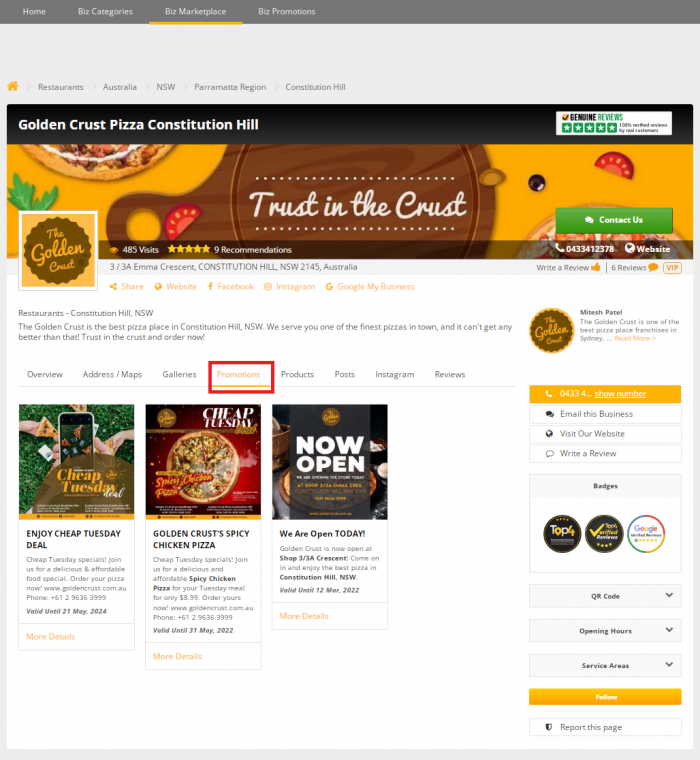
6. Search engine indexing
Indexing is the process by which search engines organise information before a search to enable super-fast responses to queries. This means if you want search engines, including Google, to know you exist, indexing is essential.
Check your robots.txt and XML sitemap to ensure your site is indexed properly now and into the future. Set up Google Search Console to look for errors.
7. Prioritize Mobile
In this day and age, everybody is on their cell phones all the time. Mobile accounts for a high percentage of visits to restaurant websites. And Google now uses the mobile version of a website to understand its content.
You need to create a responsive website or one that passes the necessary mobile-friendly tests.
And that’s just the beginning when it comes to mobile.
You also need to think about page load speed, proper rendering, and providing a great mobile user experience.
8. Measure Your Efforts
Before you execute any of your SEO strategies, make sure all aspects are measurable.
When you’re investing time and money in your strategy, you’d want to know what aspects are working and which ones aren’t. You’d also want to know where your efforts were (and are) best producing a return on investment.

Track visibility, engagement, and conversion metrics as deep as you can connect them to your business.
Beyond that, you’ll need to identify the right progress metrics tied to goals so you know you’re moving in the right direction.
Final Thoughts
Whether it’s the pandemic or the increasing competitive pressure in the industry, right now more than ever, having an online presence is no longer an option for local restaurants. It is essential.
Top4 is a location-based marketing platform to help local businesses get more leads and customers. With state-of-the-art technology, your Top4 Business Profiles are integrated with major social media and web platforms to help manage businesses with ease.

Our unique platform is designed to deliver to your target market using geographic, categorical and demographic targeting. Whether it’s one-location or multilocation restaurants you own, Top4 can help boost your online visibility and put your local business in front of the right people!
Get your local restaurant found instantly on Google by being on Top4. Join today!
To find out how we can help you with your Website + Marketing, using our unique location marketing platform called Top4, get in touch today at www.top4marketing.com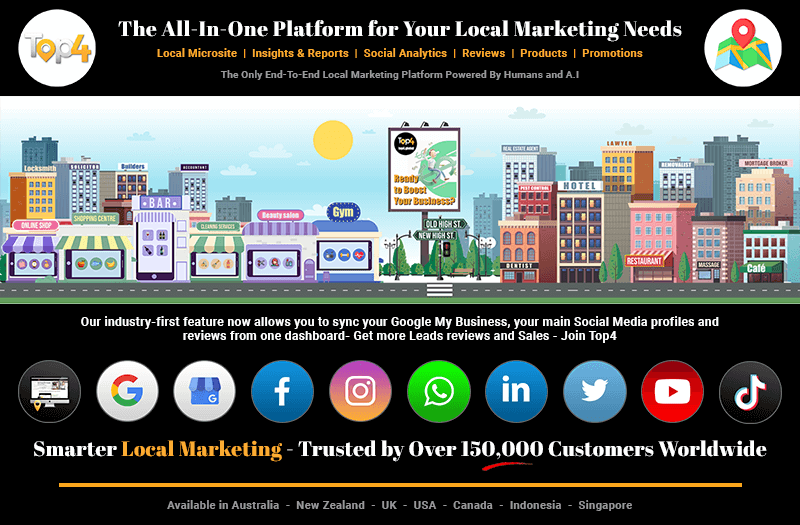
Looking to build customer loyalty through social media? Don’t forget to add your business to Top4.com.au
List your business, create your own digital store to sell goods and services, and share posts on social media. Promote your business on Google instantly! Should you need help with local digital marketing then view our new Google Marketing Platform and services Top4 Marketing
Get Found On Google Promote Your Website, Reach local customers today!
Our Digital Marketing Agency Services Across All Industries Include Search Engine Optimisation (SEO), Google Marketing, Website Design, Corporate Web Development, and local location-based marketing using our own Google Marketing Platform!
Engage A Social Media Agency For Only 1/3 The Cost Of Employing A Social Media Manager…LET’S TALK!
Source: SearchEngineJournal




